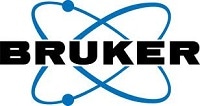Surface plasmon polaritons and surface phonon polaritons, thanks to their high spatial confinement, present new opportunities to enhance light-matter interaction in 2D materials. Furthermore, they are enabling the development of novel photonic devices like superlenses, subwavelength metamaterials, and others.
A versatile optical imaging and spectroscopy tool with nanometer spatial resolution and wide spectral coverage is necessary to obtain in-situ characterization of such polaritonic excitations across different applications.
Using s-SNOM for Nanoscale Imaging
s-SNOM provides a unique way to selectively excite and locally detect electronic and vibrational resonances in real space through a non-invasive near-field light-matter interaction.
A unique capability for nanoscale imaging and spectroscopy over the whole mid-infrared spectral range is provided by the Anasys nanoIR3-s Broadband system (2.5 µm - 15 µm / 4000 - 670 cm-1). This is achieved by coupling with a super-bright broadband light source, based upon a femtosecond OPO/DFG laser.
This laser source can also alter its linewidth for imaging (narrow-linewidth mode and a spectral resolution of 4 cm-1) and spectroscopy (broad-linewidth mode >200 cm-1), while featuring high laser power and wide spectral range.
.jpg)
Figure 1. Optical permittivity of hBN in the mid-infrared.1
By studying the surface phonon polaritons dispersion of hexagonal boron nitride (hBN), the potential of this technique can be demonstrated. hBN has a hyperbolic optical permittivity near its two Reststrahlen bands in the mid-infrared region.
Optical permittivity, with resonances at 760 cm-1 for out-of-plane (εz) and 1370 cm-1 for in-plane (εt), has been plotted (see Figure 1). The experiment schematics of a nanoIR3-s Broadband system imaging a sample of hBN nanoflake is shown in Figure 2. The IR light is closely focused on the AFM probe and launches hBN surface phonon polaritons at the tip apex.
The excited surface phonon polaritons form a standing wave pattern, propagating out along the surface and reflecting from the sample edges. In Figure 3, an example of Nano-FTIR spectrum collected at different locations on the hBN sample is shown.
.jpg)
Figure 2. Schematics of a nanoIR3-s Broadband system consisting of a super broadband mid-IR laser source and a compact nano-FTIR microscope.
Applications of NanoIR3-s Broadband System
The nanoIR3-s Broadband system can acquire high-resolution 2D nanoimaging of surface phonon polaritons at targeted wavelengths when operating in narrow-linewidth mode for imaging. A full surface phonon polaritons spectrum over 670–4000 cm-1 can be gathered at a targeted sample location with nanometer resolution when operating in broad-linewidth mode for spectroscopy. Spatiospectral nanoimaging of the full surface phonon polariton dispersion is given in a single measurement by collecting spectrum at a variety of locations.
.jpg)
Figure 3. Near-field optical spectrum on a thin hBN nanoflake shows a systematic spectral shift varying with distances to the edge
Figure 4 depicts near-field images collected in narrow-linewidth mode on a hBN nanoflake. By raster scanning the sample at a specific wavelength, AFM height (Figure 4a) and a near-field image at the selected wavelength are gathered at the same time. IR near-field images at differing laser wavelengths at a tuning step of 10 cm-1 are shown in Figure 4b-w.
A standing-wave pattern along the sample edge in each image can be seen across the range. The standing-wave pattern systematically varying with laser frequency and distance from the sample edge can also be observed. Simply by doubling the fringe period, the polariton wavelength λp can be obtained.
.jpg)
Figure 4. Near-field optical images on a hBN nanoflake at different wavelengths under narrow linewidth mode. Each image is 1.5 µm x 1.5 µm with 10 nm pixel spacing: a) AFM height; b-w) near-field images at different wavenumbers, showing a systematic variation of surface phonon polariton (SPP) waves pattern.
Spectroscopy under broad-linewidth mode is shown in Figure 5. Spatiospectral nanoimaging of the full surface phonon polariton dispersion can be plotted as a 3D datacube by acquiring spectra at a range of locations. Figure 5a shows the spatiospectral nanoimaging by plotting a stack of spectra in a waterfall manner, with individual spectrum, as in Figure 3.
Each spectrum of spectral resolution (3 cm-1) has an acquisition time of one minute, and the line scan pixel spacing is 15 nm, giving a total measurement time of ~2.5 hours. The spatiospectral maps in Figure 5, obtained in broad-linewidth mode with >200 cm-1 spectral linewidth, display the full s-SNOM amplitude and phase response of hBN, with the inclusion of the optical phonon at 1370 cm-1 and surface phonon polariton waves ranging between 1370–1550 cm-1.
.jpg)
Figure 5. Spatiospectral nanoimaging on a hBN nano flake: (A) The array of spectra is collected under broad-linewidth mode along the dotted white line; By plotting the stack of spectrum in a false color in a waterfall manner with position as vertical axis, a spatiospectral nanoimaging map is created for amplitude (b) and phase (c), respectively. The spatio-spectral scan shows the complete surface phonon polariton frequency response across the whole range, with high spectral resolution (3 cm-1). Line scan pixel spacing is 15 nm, and each spectrum has an acquisition time of 1 minute, giving a total measurement time of ~2.5 hours
Conclusion
The combination of imaging with broadband spectroscopy (and spatio-spectral imaging) enabled by the nanoIR3-s Broadband system offers a powerful tool for spatiospectral nanoimaging of surface phonon polaritons and surface phonon polaritons in 2D materials with nanometer spatial resolution, wide spectral coverage, and high signal to noise.
Reference
Caldwell, J. D., et al. (2014). Sub-diffraction volume-confined polaritons in the natural hyperbolic material: hexagonal boron nitride. Nat. Comms. 5, 5221.

This information has been sourced, reviewed and adapted from materials provided by Bruker Nano Surfaces, who has acquired Anasys Instruments. For more information on this source, please visit Bruker Nano Surfaces.